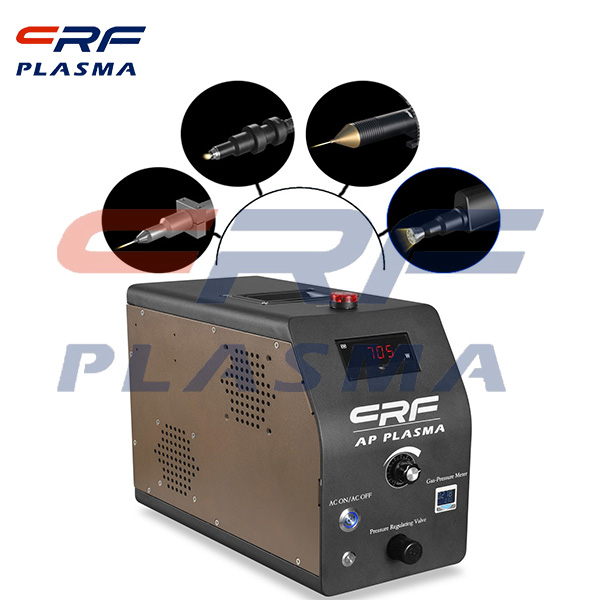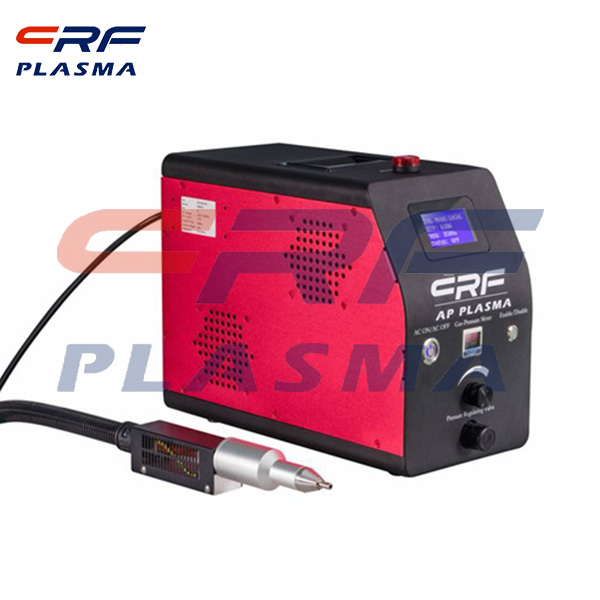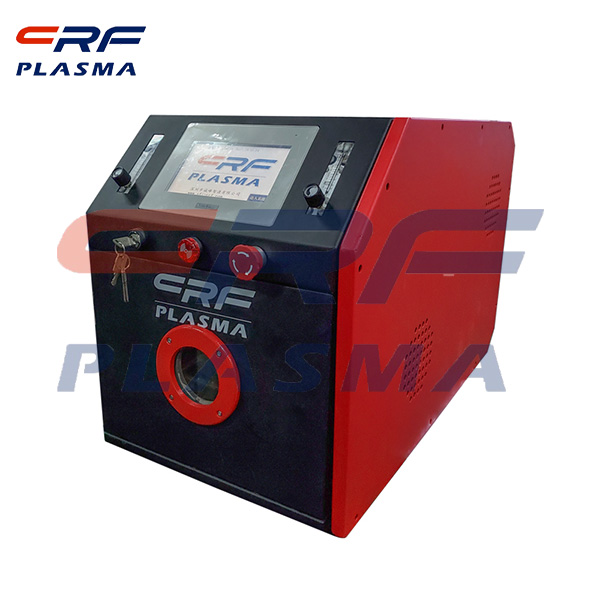
Welcome to Shenzhen Sing Fung Intelligent Manufacturing Co., Ltd.
E-mail:shaobo@sfi-crf.com
Changes of low-temperature plasma etching technology in plasma cleaning Machine in the era of 3D logic and memory
- Categories:Company Dynamics
- Author:plasma cleaning machine-surface treatment equipment-CRF plasma machine-Sing Fung Intelligent Manufacturing
- Origin:
- Time of issue:2020-12-24
- Views:
(Summary description)Since NAND was produced in 2014 and officially entered the 3D era (3 NAND), logic products also entered the mass production of 3D structure fin-type transistors in 2015. With the semiconductor industry stepping into the era of THREE-DIMENSIONAL structure, the traditional etching technology of plasma cleaning machine cannot meet the requirements of small-size complex process. Plasma cleaning machine etch machine manufacturer Eight Xianhai launched a variety of applicable THREE-DIMENSIONAL structure etching technology. For plasmas, the electron energy distribution (EED and Ion energy distribution (IED) can generally be characterized by two main lines. While EED typically controls electron temperature, plasma degree, and electron impact reaction, IED is controlling ion bombardment of the surface energy of the wafer that is key to optimizing etching patterns and reducing damage to the wafer. The commercial etching machines that have been introduced are mainly along the main line of EED to improve the fighting capacity of the etching machines. TEL's RLSA, for example, uses surface waves to excite plasma, which then spreads to the surface of a wafer. This machine is currently under development in the electronic temperature is very low, probably as low as 1.0eV. And on the company's Mesa even Hitachi 8190 xt company is by synchronizing pulses to achieve low electronic refund, synchronous pulse refers to the source of power and bottom electrode bias power synchronous switch, when in the closed position, a substantial reduction in plasma cleaning machine electrons in the plasma, the plasma from the original electron - ion into the ion - ion, at the same time because the disappearance of the electrode surface at the bottom of the sheath, and to better control the positive and negative from the plasma are provided. RLSA is realized with ion-ion plasma by diffusion in space, while Mesa/8190XT is realized with time (plasma switch). In principle, the RLSA electron temperature is lower, while Mesa/8190XT increases two means of regulating the plasma, namely the switching ratio and frequency of the synchronous pulse. Mesa is two rf power synchronous pulses, and 8190XT could theoretically be a microwave/RF synchronous pulse. Generally, the plasma etched by the plasma cleaner is electronegative, so in the ion-ion plasma state, the negative ion can be freed from the bondage and the positive charge on the wafer surface, so as to reduce the charge accumulation effect. Low electron temperatures reduce the dissociation rate, which reduces the energy that bombards the surface of the wafer, and reduces polymer production and vacuum uv release. Low electron temperature can narrow the width of ion energy peak, made it possible to precise control energy strike, thus improve choose ビ. In addition, in the plasma cleaning machine plasma closing time fresh air club can change the uniformity of the plasma, in addition, synchronous rushed technique can pitch by clearance rate and active group of flux and the flux, this ratio will influence the etching selectivity, the degree of influence is the etching and the specific gas has a strong correlation. Pulse etching of plasma cleaning machine began as reported by Boswell Professor in the Plasma Laboratory of Australian National University in 1985. Over the past 30 years, there have been about 50,000 articles on pulse etching, accounting for 15% of plasma etching. In addition to synchronous pulse technology, there are source power pulse, bias power pulse, Embedded pulse, and Delayed pulse, all of which are microtuned on EED or used in special processes. For example, the source power pulse generally has no bias, so it is suitable for the fine treatment (removal) of surface materials. In the case of bias power pulse, because the source power works continuously, the electronic temperature will not decrease with the pulse. If the reduction is needed, it is usually achieved by increasing the pressure in the reaction chamber, but the anisotropic etching ability will be weakened. However, this problem can be solved by combining with high power bottom bias. The current high bias pulse technology (US9059116) is available in the High-end Kiyo series of The Semiconductor Industry. Compared to the synchronous pulse, the particle energy Angle distribution (IEAD) in the plasma cleaning machine is similar to the synchronous pulse during plasma shutdown, thus reducing the charge accumulation effect. Embedded pulse is generally pulsed simultaneously with the source power and the bias power, but the bias power opening time is shorter than the source power opening time, which can reduce the high electron temperature peak of the synchronous pulse plasma at the opening moment. There are several kinds of stage-step pulse techniques, which are roughly when the source power is closed, the bias power de
Changes of low-temperature plasma etching technology in plasma cleaning Machine in the era of 3D logic and memory
(Summary description)Since NAND was produced in 2014 and officially entered the 3D era (3 NAND), logic products also entered the mass production of 3D structure fin-type transistors in 2015. With the semiconductor industry stepping into the era of THREE-DIMENSIONAL structure, the traditional etching technology of plasma cleaning machine cannot meet the requirements of small-size complex process. Plasma cleaning machine etch machine manufacturer Eight Xianhai launched a variety of applicable THREE-DIMENSIONAL structure etching technology. For plasmas, the electron energy distribution (EED and Ion energy distribution (IED) can generally be characterized by two main lines. While EED typically controls electron temperature, plasma degree, and electron impact reaction, IED is controlling ion bombardment of the surface energy of the wafer that is key to optimizing etching patterns and reducing damage to the wafer. The commercial etching machines that have been introduced are mainly along the main line of EED to improve the fighting capacity of the etching machines. TEL's RLSA, for example, uses surface waves to excite plasma, which then spreads to the surface of a wafer. This machine is currently under development in the electronic temperature is very low, probably as low as 1.0eV. And on the company's Mesa even Hitachi 8190 xt company is by synchronizing pulses to achieve low electronic refund, synchronous pulse refers to the source of power and bottom electrode bias power synchronous switch, when in the closed position, a substantial reduction in plasma cleaning machine electrons in the plasma, the plasma from the original electron - ion into the ion - ion, at the same time because the disappearance of the electrode surface at the bottom of the sheath, and to better control the positive and negative from the plasma are provided.
RLSA is realized with ion-ion plasma by diffusion in space, while Mesa/8190XT is realized with time (plasma switch). In principle, the RLSA electron temperature is lower, while Mesa/8190XT increases two means of regulating the plasma, namely the switching ratio and frequency of the synchronous pulse. Mesa is two rf power synchronous pulses, and 8190XT could theoretically be a microwave/RF synchronous pulse. Generally, the plasma etched by the plasma cleaner is electronegative, so in the ion-ion plasma state, the negative ion can be freed from the bondage and the positive charge on the wafer surface, so as to reduce the charge accumulation effect. Low electron temperatures reduce the dissociation rate, which reduces the energy that bombards the surface of the wafer, and reduces polymer production and vacuum uv release. Low electron temperature can narrow the width of ion energy peak, made it possible to precise control energy strike, thus improve choose ビ. In addition, in the plasma cleaning machine plasma closing time fresh air club can change the uniformity of the plasma, in addition, synchronous rushed technique can pitch by clearance rate and active group of flux and the flux, this ratio will influence the etching selectivity, the degree of influence is the etching and the specific gas has a strong correlation.
Pulse etching of plasma cleaning machine began as reported by Boswell Professor in the Plasma Laboratory of Australian National University in 1985. Over the past 30 years, there have been about 50,000 articles on pulse etching, accounting for 15% of plasma etching. In addition to synchronous pulse technology, there are source power pulse, bias power pulse, Embedded pulse, and Delayed pulse, all of which are microtuned on EED or used in special processes. For example, the source power pulse generally has no bias, so it is suitable for the fine treatment (removal) of surface materials. In the case of bias power pulse, because the source power works continuously, the electronic temperature will not decrease with the pulse. If the reduction is needed, it is usually achieved by increasing the pressure in the reaction chamber, but the anisotropic etching ability will be weakened. However, this problem can be solved by combining with high power bottom bias. The current high bias pulse technology (US9059116) is available in the High-end Kiyo series of The Semiconductor Industry. Compared to the synchronous pulse, the particle energy Angle distribution (IEAD) in the plasma cleaning machine is similar to the synchronous pulse during plasma shutdown, thus reducing the charge accumulation effect. Embedded pulse is generally pulsed simultaneously with the source power and the bias power, but the bias power opening time is shorter than the source power opening time, which can reduce the high electron temperature peak of the synchronous pulse plasma at the opening moment. There are several kinds of stage-step pulse techniques, which are roughly when the source power is closed, the bias power de
- Categories:Company Dynamics
- Author:plasma cleaning machine-surface treatment equipment-CRF plasma machine-Sing Fung Intelligent Manufacturing
- Origin:
- Time of issue:2020-12-24 10:10
- Views:
Changes of low-temperature plasma etching technology in plasma cleaning Machine in the era of 3D logic and memory:
Since NAND was produced in 2014 and officially entered the 3D era (3 NAND), logic products also entered the mass production of 3D structure fin-type transistors in 2015. With the semiconductor industry stepping into the era of THREE-DIMENSIONAL structure, the traditional etching technology of plasma cleaning machine cannot meet the requirements of small-size complex process. Plasma cleaning machine etch machine manufacturer Eight Xianhai launched a variety of applicable THREE-DIMENSIONAL structure etching technology. For plasmas, the electron energy distribution (EED and Ion energy distribution (IED) can generally be characterized by two main lines. While EED typically controls electron temperature, plasma degree, and electron impact reaction, IED is controlling ion bombardment of the surface energy of the wafer that is key to optimizing etching patterns and reducing damage to the wafer. The commercial etching machines that have been introduced are mainly along the main line of EED to improve the fighting capacity of the etching machines. TEL's RLSA, for example, uses surface waves to excite plasma, which then spreads to the surface of a wafer. This machine is currently under development in the electronic temperature is very low, probably as low as 1.0eV. And on the company's Mesa even Hitachi 8190 xt company is by synchronizing pulses to achieve low electronic refund, synchronous pulse refers to the source of power and bottom electrode bias power synchronous switch, when in the closed position, a substantial reduction in plasma cleaning machine electrons in the plasma, the plasma from the original electron - ion into the ion - ion, at the same time because the disappearance of the electrode surface at the bottom of the sheath, and to better control the positive and negative from the plasma are provided.

RLSA is realized with ion-ion plasma by diffusion in space, while Mesa/8190XT is realized with time (plasma switch). In principle, the RLSA electron temperature is lower, while Mesa/8190XT increases two means of regulating the plasma, namely the switching ratio and frequency of the synchronous pulse. Mesa is two rf power synchronous pulses, and 8190XT could theoretically be a microwave/RF synchronous pulse. Generally, the plasma etched by the plasma cleaner is electronegative, so in the ion-ion plasma state, the negative ion can be freed from the bondage and the positive charge on the wafer surface, so as to reduce the charge accumulation effect. Low electron temperatures reduce the dissociation rate, which reduces the energy that bombards the surface of the wafer, and reduces polymer production and vacuum uv release. Low electron temperature can narrow the width of ion energy peak, made it possible to precise control energy strike, thus improve choose ビ. In addition, in the plasma cleaning machine plasma closing time fresh air club can change the uniformity of the plasma, in addition, synchronous rushed technique can pitch by clearance rate and active group of flux and the flux, this ratio will influence the etching selectivity, the degree of influence is the etching and the specific gas has a strong correlation.
Pulse etching of plasma cleaning machine began as reported by Boswell Professor in the Plasma Laboratory of Australian National University in 1985. Over the past 30 years, there have been about 50,000 articles on pulse etching, accounting for 15% of plasma etching. In addition to synchronous pulse technology, there are source power pulse, bias power pulse, Embedded pulse, and Delayed pulse, all of which are microtuned on EED or used in special processes. For example, the source power pulse generally has no bias, so it is suitable for the fine treatment (removal) of surface materials. In the case of bias power pulse, because the source power works continuously, the electronic temperature will not decrease with the pulse. If the reduction is needed, it is usually achieved by increasing the pressure in the reaction chamber, but the anisotropic etching ability will be weakened. However, this problem can be solved by combining with high power bottom bias. The current high bias pulse technology (US9059116) is available in the High-end Kiyo series of The Semiconductor Industry. Compared to the synchronous pulse, the particle energy Angle distribution (IEAD) in the plasma cleaning machine is similar to the synchronous pulse during plasma shutdown, thus reducing the charge accumulation effect. Embedded pulse is generally pulsed simultaneously with the source power and the bias power, but the bias power opening time is shorter than the source power opening time, which can reduce the high electron temperature peak of the synchronous pulse plasma at the opening moment. There are several kinds of stage-step pulse techniques, which are roughly when the source power is closed, the bias power delay is asynchronously closed or the bias power delay is asynchronously opened in advance. The purpose is to delay the ion flux and reduce or increase the ion bombardment energy (relative to the synchronization pulse) by adjusting the plasma potential during the plasma source power closing stage. Generally speaking, it is difficult to realize embedded pulse and staggered pulse technology at the device end, and it is still a long way from mass production.
Three-dimensional etching technology innovation is important, but the plasma cleaning machine etching machine stability and defect control ability is also crucial, because these will directly affect the quality and schedule of mass production, especially in this changing era, losing the first opportunity may fail. As mentioned above, EED I's etching technology improvements have been available on a variety of commercial machines and have a place in the 3D semiconductor product market. Academic improvement at the direction of EED and Tandem ICP (Tandem) and the use of pulse produce anion and neutral particle Beam etching forms through Beam energy control area, but the latter choice than is the weak link in the direction of IED in principle of uhf radio frequency source can realize ion energy narrow peak, contribute to achieving high etching selectivity, but usually uhf radio frequency leads to the standing wave effect affects the uniformity of plasma, especially on the large size wafer.
Currently improved commercial machines in the direction of IED are CCP machines developed by Tokyo Electronics that use Negative DC Pulsing on electrodes, mainly for ultra-high aspect ratio memory dielectric material etching. The mechanism is that when the RF synchronous pulse is closed, the amount of DC increases, thus increasing the ion bombardment ability and charge neutralization ability. In the ICP direction, the academic school proposes a similar idea, that is, to install DC on the base of the emitter synchronous impulse, and on the upper electrode (negative) or the lower electrode (positive). Because the rf coupling of ICP of the plasma cleaning machine can be ignored, the introduction of DC Pulsing can realize the precise control of high selection ratio of etching among different materials, reaching the ALE etching state, which is far better than the traditional 4-step method (adsorption, extraction, reaction and extraction) of ALE etching based on gas pulse. In addition to improvements in the direction of EED and IED, Panlin Semiconductor's hybrid pulse (AMMP, gas, RF power, etc.), ultra bias RF source, and Hydra electrostatic card heating are also effective means to achieve high quality etching of 3d structures on the plasma cleaner etching machine. Gas pulse, also known as cyclic etCH, basically consists of three parts: protection, activation, and etching. It is equivalent to divide the simultaneous protection, activation and etching in the original continuous etching into three independent steps, so as to achieve strict control of the amount of etching on the target interface. A mixed pulse is a simultaneous pulse of gas, source/bias power, pressure, etc. This technique is effective in improving the etching difference between sparse and dense areas.
Scan the QR code to read on your phone

TEL:0755-3367 3020 / 0755-3367 3019

E-mail:sales-sfi@sfi-crf.com

ADD:Mabao Industrial Zone, Huangpu, Baoan District, Shenzhen


















